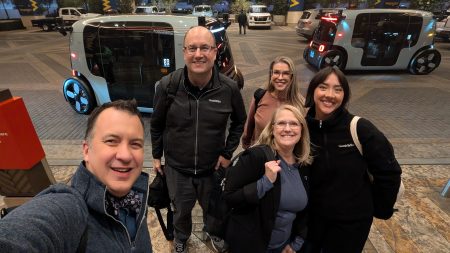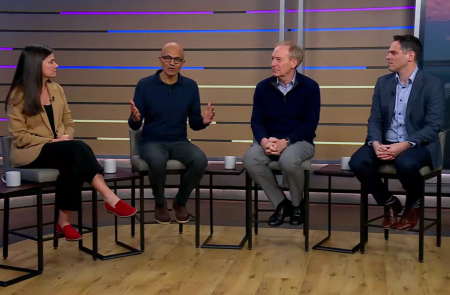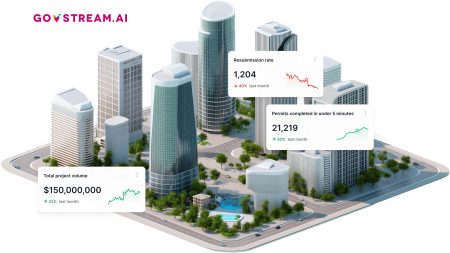Raj Singh Leads Smartsheet’s Bold AI Transformation
In the rapidly evolving landscape of enterprise software, Smartsheet’s new CEO Raj Singh is positioning the company for a dramatic transformation powered by artificial intelligence. Taking the helm of the Bellevue-based software giant just last month, Singh made his public debut as CEO at the company’s annual Smartsheet Engage conference in Seattle, where he articulated a vision that extends far beyond the company’s roots in collaborative spreadsheets and work management. With over 5,000 attendees watching, Singh declared it was “time for Smartsheet to step out of the shadows” and embrace its potential as a leader in the AI-driven future of work. His arrival at this pivotal moment is no coincidence – Singh has built his reputation on identifying technological waves before they crest, having successfully bet on software-as-a-service with Concur decades ago and anticipating the telehealth revolution with Accolade. Now, he sees a similar transformation opportunity with Smartsheet, one so compelling that he admits he likely wouldn’t have taken the position if not for the AI revolution sweeping through enterprise software.
The timing of Singh’s leadership couldn’t be more strategic as Smartsheet navigates a significant transition. Earlier this year, the company went private in an $8.4 billion deal backed by Vista Equity Partners and Blackstone, freeing it from the quarterly pressures of public markets. This move gives Smartsheet what Singh describes as “more license to do what we need to do and to go fast,” a necessity in the current competitive landscape. The company now faces the challenge of differentiating itself in a crowded market that includes tech giants like Microsoft, Google, and Salesforce, alongside agile competitors such as Asana, Monday.com, Airtable, and ClickUp. Singh’s mandate is clear: redefine how customers perceive Smartsheet, moving beyond its reputation as merely an “online spreadsheet company” or to-do list manager, and positioning it as an enterprise-grade intelligent work management platform with AI at its core.
At the conference, Smartsheet unveiled a comprehensive suite of AI-powered capabilities that form the backbone of its “Intelligent Work Management” platform. The new offerings include Smart Assist, Smart Flows, and Smart Agents – tools designed to help teams create projects, manage tasks, and identify potential issues automatically. These features represent Smartsheet’s commitment to embedding AI throughout its product ecosystem, making workflows more intuitive and reducing manual labor. Enterprise-focused additions like Scenario Planning and Security Score aim to give organizations greater control and visibility across their operations, addressing the growing complexity of modern business processes. These innovations signal Smartsheet’s evolution from a collaborative work management tool to an integrated platform that can orchestrate work across departments and systems, leveraging AI to create tangible business value for customers.
Singh frames Smartsheet’s AI strategy through the lens of three evolutionary phases: the first generation of AI as copilots (assistants that augment human capabilities), the second as autonomous agents (systems that can perform tasks independently), and the third – where Smartsheet aims to lead – as cross-system automation that integrates multiple enterprise technology stacks. This third phase represents the most complex challenge, one that Singh believes only a few companies worldwide have the capability to solve. What distinguishes Smartsheet’s approach is its focus on business outcomes rather than technology for technology’s sake. As Singh emphasizes, “Agents aren’t definitionally valuable. What’s valuable is productivity. What’s valuable is revenue. What’s valuable is cost reduction.” This pragmatic perspective positions Smartsheet to develop AI solutions that deliver measurable impact rather than following industry hype.
When considering competition from nimble AI-driven startups entering the productivity space, Singh maintains that established players like Smartsheet hold significant advantages – if they have the courage to leverage them. The “incumbency advantage” comes from existing customer relationships, established workflows, and perhaps most critically, vast repositories of data that provide the foundation for meaningful AI applications. “If I have petabytes of data and you’ve got none – if you beat me by understanding my customer better than me, then I was asleep at the switch,” Singh argues, highlighting the responsibility that comes with market leadership. He acknowledges that while startups might build software more quickly, established companies should excel at generating insights from their data. Having recently invested in an AI company himself, Singh understands both sides of the innovation equation, but he’s betting that Smartsheet’s combination of enterprise-scale data and renewed focus on AI-powered solutions will prove decisive.
As Smartsheet enters this new chapter under Singh’s leadership, the company finds itself at a fascinating intersection of opportunity and challenge. Now privately held, with over $1 billion in annual revenue and a substantial customer base of major businesses, Smartsheet has the resources and freedom to pursue its AI-driven vision without quarterly earnings pressure. Singh’s background – successfully guiding companies through major technological transitions – suggests he may be uniquely qualified to lead this transformation. The stakes are undeniably high in a market being reshaped by artificial intelligence, but Singh’s message conveys both urgency and confidence: “If I lose, it’s because I wasn’t paying attention. And I’d like to think that’s not going to be us.” For Smartsheet and its new CEO, the AI revolution represents not just an evolutionary step but a fundamental reimagining of how enterprise software can empower organizations in the decades ahead – a bold bet that Singh is fully committed to winning.















